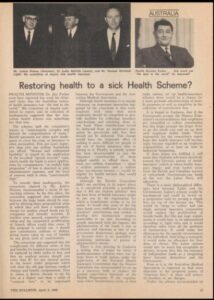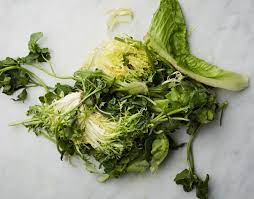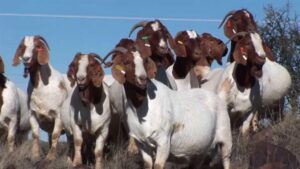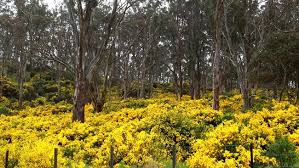Dr Tanveer Ahmed is a University of Sydney graduate, who is in psychiatric practice with an alphabet list of specialities from addictive disorders to transcultural psychiatry. Nowhere among the list is a claim that he knows anything about Medicare. In fact, what he wrote in AFR some weeks ago contains a particular passage of arrant nonsense replete with non-sequiters. (sic)
But as all relevant stakeholders agree, the Medicare system was dreamt up at a very different time. Half a century ago, the challenges were around infectious disease, infant mortality and work-related injuries in a manufacturing-based economy. The medical profession was about large hospitals and alpha male consultants.
First, Dr Ahmed, Medicare is a payment system of Federally-funded patient benefits, a Constitutional head of power granted to the Commonwealth in the 1946 Referendum. Earle Page, in 1953, was the first to try and harness this head of power for the benefit of the patient, particularly in setting up the Pharmaceutical Benefits Schedule. Still in operation today, Dr Ahmed.

Now, progressing this nonsensical proposition that Medicare was the results of some reverie: the genesis for Medicare was the Nimmo Inquiry, set up by a Coalition Government and reporting in 1969. The Report was the platform, which enabled John Deeble and Dick Scotton to outline their plan for a universal health system. This was adopted first by the Whitlam Government (Medibank) and in its second iteration, Medicare, when Hawke was in power. Patient medical benefits have been at the heart of system. The throwaway line of medicine 50 years ago reflects the arrogance of ignorance. Unlike today, infectious disease was not perceived a major problem. It was the decade before AIDS; and Infant mortality was not a major discussion point, but abortion was. In 1972, yes, the mortality rate per 1000 live births was about 16; today it is closer to three. The figure for Aboriginal infant mortality is closer to 13.
Entering into a discussion about what was relevant 50 years ago demonstrates the resilience of the payment system and how it has coped with distortions. In other words, can that resilience continue?
A major challenge is that there is no recurrent mechanism for adjusting the fees for Medicare benefits. What happens now periodically is the Commonwealth sets up an inquiry into medical benefits – or more specifically one or two sections of the Schedule – and while the Inquiry proceeds Government uses it as an excuse to freeze Medicare rebates. So different from changes initiated by the Nimmo Inquiry 54 years ago.
Secondly, a serious distortion is the practice of public hospitals to double dip by “privatising’ their outpatient facilities, diagnostic imaging and pathology. Public hospitals are supposed to be funded through the State/ Commonwealth agreements. However, there were some State governments that diverted such funding for other uses and have been shamed. Politicians are very good at building monuments to themselves and hospitals can issue very useful media releases, especially if the number of dazzling gizmos blinds the population to the lack of staff and services.
Yet Dr Ahmed said the medical profession is all about large hospitals. Where does that comment get us? Hospitals are about staff and being able to provide an optimal 24/7 service. The solution lies in the management of the hospitals and when Dr Ahmed was in swaddling clothes, I was involved in a hospital management plan which worked because it encouraged participation by the medical work force in management – in other words not leaving the decision making in the health care system to others. But what has his statement to do with the current plight of the health system.
The recently constituted Review commissioned for two PSM awardees who probably know “where the bodies are buried” should be able to produce a “fearless review” report, unless both of them are among the grave diggers. The cynical view is that by commissioning the Review from the “Yes Minister” crowd, at best we may get a sample of the soil where the bodies are buried rather than a complete exhumation.
The third challenge is the growth of medical practice being treated as just another business commodity. The hedge funds, the private equity investors, the conglomerates based overseas mostly saw Medicare as a “Eureka” moment. A government ATM! The doctors become salaried ciphers, as they get a guaranteed stipend while the patient benefit money flowed offshore into tax havens. Ahmed mentions this but does not make the connection between this distortion and Medicare.
The fourth is that the co-payment becomes the major patient cost as the value of the benefits decreases relatively. Given that medical specialists charges are increasingly detached from the medical benefit, then Medicare becomes more and more strangled – and in time irrelevant if no remedial action is taken. Two forces are contributing to this strangulation – (a) funding the NDIS – it is difficult to believe that significant funding that would otherwise be directed to Medicare has not been diverted to the NDIS, and (b) the asymmetry of information undertaken. between patient and provider. The consumer is at a disadvantage in that when confronted with a diagnosis he or she is completely at the mercy of the information fed by the providers.
These are the real reasons Medicare has lost its effectiveness. A salaried profession is coming to general practice by stealth, coupled with an absence of regular review of the value of the patient benefits. In the past, George Repin assured that the AMA’s contribution was in Joint Inquiries, regular engagement with the Commonwealth that assured the value of the patient benefits. I fear today that the AMA in such updated reviews would be protecting the profits of overseas investors.
Introduction of capitation across Australia raises the question of why? The Constitution provides a particular way to go which has been remarkably robust, despite the attempt of Fraser’s Government in particular to sabotage it in its infancy before Medicare’s introduction consolidated the system under Hawke, with the guidance of his exceptional Minister for Health, Neal Blewett.
I have dealt previously with this idea that the health professionals naturally come together and work co-operatively. To accomplish this requires people with very special skills and not authoritarian personalities – perhaps Dr Ahmed’s feared alpha male consultants rampaging through Medicare. Still, I do not know what a reference to the alpha male medical consultant has to do with the value of the Medicare Benefit.
No, Dr Ahmed, the scheme was not dreamed up; and God knows why the AFR printed this shallow piece where simply put, the Commonwealth government, a Labor Government, is just starving the scheme into bureaucratic marasmus.
 Meanwhile, the AMA sends out media releases printed on warm lettuce leaves.
Meanwhile, the AMA sends out media releases printed on warm lettuce leaves.
Herding Goats
In an earlier blog, I wrote about my Uncle Frank Egan, who kept a flock of sheep in his backyard in Avoca, a settlement nestled in the Victorian Pyrenees. He fed his sheep by a judicious use of the Long Paddock for miles around, which earned its title as Egan’s Paddocks. It kept the flock intact, while he had very little actual land.
It struck me after driving through the extensive gorse lining the roadway between Zeehan and Strahan, after reading about the various forms of gorse eradication, that goats would seem to be the best way to solve the problem, as long as the relevant local government is patient as it may take a few years to fully accomplish.
Likewise, after the extensive rains, with the prolific growth of grasses alongside the roads, goats could be used to trim the verges. However, goats without a goatherd may prefer a diet of wheat shoots or canola rather than just stick to the roadside. Thus, goats need supervision. The concept of local government employing a goatherd should not be too difficult with a migrant community where the goat is an essential part of family life.

Goats are such versatile animals. Angora goats are known for their hair; others species for the quality of their meat, and further others as milking goats. The assessment of goats in relation to their weed clearing capacity, especially relating to gorse, suggest Boer goats may be the best.
In support of the above, a Dandenong Valley horticulturist, Colin Arnold has said; “Angled onion is a major problem along the Dandenong Creek. The goats love the flowers and eat the foliage too at certain times. They also eat other local weeds: privet, English ivy, pittosporums, blackberries, hawthorn and even prickly gorse. Gorse has seed that is viable for 25 years, but goats will find those seedlings and eat them, too. In areas where there are larger bushes, such as blackberries and tree regrowth, I put bigger goats.”
He added that young goats preferentially target weeds rather than eat the native vegetation. I would like to see the evidence, but generally the local councils should know where their native vegetation needs protection.
Arnold does use Boer goats for the task. They are also good meat goats – so in drought times, the flocks can be reduced. Others use an electrified corral where they can leave the goats to munch. The goats are resilient to being outside, if given a modicum of care. Nevertheless, the employment of goatherds by government could standardise the responsibilities of such a person.

To me, it is a no brainer for the use of goats to be introduced and trained goat herders should be recruited to establish an industry that becomes no different from any other local government responsibility.
It is a pity that Uncle Frank never developed a business called “The Long Paddock Munch” – the family fortune could have been, founded in the mouth of the goat.
Pity about the lack of goats then, and the spectacle of Uncle Frank as a goatherder is just too fanciful, but the profession should not be discarded as a thought bubble today with so much exotic invasive weed needing removal – and hopefully also to fuel reduction in the bush.
Snug in the Huon Valley
Where would you find settlements called Snug and Flowerpot and Eggs and Bacon Bay? Then there is Cygnet, just down the road. Has a certain ring about it, if under a different spell.
 You drive along the winding road South from Hobart into the Land of the Scarecrows. It is a picturesque drive through small villages and past farms. There is a collage of primary produce outlets and markets along the way. Fruit and vegetables are fresh; the taste tells me so. Tomatoes straight off the vine; wonderfully variegated beetroot and radishes; home to stone fruit and once where apple orchards and hop field dominated, now there are cherry trees covered in netting, and at the end of summer the trees are showing exhaustion after bountiful crops. This is the Huon Valley.
You drive along the winding road South from Hobart into the Land of the Scarecrows. It is a picturesque drive through small villages and past farms. There is a collage of primary produce outlets and markets along the way. Fruit and vegetables are fresh; the taste tells me so. Tomatoes straight off the vine; wonderfully variegated beetroot and radishes; home to stone fruit and once where apple orchards and hop field dominated, now there are cherry trees covered in netting, and at the end of summer the trees are showing exhaustion after bountiful crops. This is the Huon Valley.
As we look out over the garden of our friends, there is the scenic D’Entrecasteaux Channel, which separates the Huon Valley from Bruny Island. On the Channel there is always a sloop or a ketch to complete the picture of summer serenity.
But if you look in the other direction covering the hillside are the brooding forests of eucalypt and blackwood.
 On 7 February 1967 Southern Tasmania was engulfed in fires, an event which came to be known as the Black Tuesday bushfires. They were the most deadly bushfires that Tasmania has ever experienced, leaving 62 people dead, 900 injured and over seven thousand homeless. The fires were particularly linked with Snug, which was almost completely razed. This occurred after a very rainy year in 1966, and there was plenty of bush to burn – as it did when the temperature rose, the wind came from the north-west and the humidity was low.
On 7 February 1967 Southern Tasmania was engulfed in fires, an event which came to be known as the Black Tuesday bushfires. They were the most deadly bushfires that Tasmania has ever experienced, leaving 62 people dead, 900 injured and over seven thousand homeless. The fires were particularly linked with Snug, which was almost completely razed. This occurred after a very rainy year in 1966, and there was plenty of bush to burn – as it did when the temperature rose, the wind came from the north-west and the humidity was low.
As we were driving on a hot day a week or so ago, we stopped at a roadside stall near New Norfolk and while we were buying his youngberries, the farmer looked up and said that the wind had shifted west, and had it done so in the morning that would have been a perfect scenario for bushfires to break out. Fortunately it did not occur.
Our friends have taken precautions against bushfire – a mandated reservoir of water, extensive clearance of vegetation including tree removal. Nevertheless, there is only one narrow road out of the Valley and despite the increase in fire trails, the bushfire danger to the Huon Valley remains, as it does to Hobart, as happened in 1967.
Fire management plans are available, but brochures are easy to write and their recommendations are often expensive to enforce. With the current doctrine of allowing everyone to do what they like, as a side product of decades of neoliberalism where trust in individual responsibility will suffice on the grounds that we all live in a rational world. Naïve, comes the cry!
After the Black Sunday bushfire in 2009 in Victoria, a curious journalist interviewed people implicated in deliberately lighting fires and found that “a criminal profile for bushfire arson {which} is fairly well defined, but to my way of thinking, unsatisfyingly clinical. We know arsonists are usually men at an average age of 26, with a disconcerting number volunteering with the country’s firefighting agencies. They also tend to be disconnected from friends and family and live with depression or {other defined} mental illness.”
In fact, the man convicted of some of the Black Sunday bushfires received 17 years imprisonment. The severity of the penalty was linked to 173 people who died; 2029 houses were lost. In contrast to the Snug bushfire, the Black Sunday bushfire took over a month to extinguish.
The Black Sunday arsonist was 39 years old at the time of the offence and a former volunteer in the Country Fire Brigade. Nevertheless, that fire’s common causes are three: fallen powerlines, lightning strikes and arson. To that can be added the discarded cigarette butts and sparks from industrial equipment. Nothing much you can do about lightning unless the site of the strike can be immediately identified – a forlorn hope. Thus, reliance on community efficiency in preparation for bushfires may help; but I am not sanguine with climate change. Tasmania will become more and more like Victoria. This would be tragic, the signs of 1967 are not evident now in the Huon Valley. But for how long?
Picklefad?
I used to play squash twice a week in the sixties. Australia at the time had the world’s best men’s and particularly women’s squash players. Heather McKay won 16 consecutive British Opens from 1962 to 1977. Squash courts were not cheap to build and as the popularity of squash waned, so did the number of squash courts. This has been ultimately the fate of indoor racquet ball sports; popularity is important to maintain their costly capital expenditure. There are a variety of these, now niche sports; moreover, table tennis without the table would be a little difficult for the ocular challenged. Badminton, once battledore and shuttlecock, is not a game for the concrete red-meat Americans. Royal tennis for the elite. The problem with croquet is that it needs a big lawn whereas tennis, once its companion sport, has proved adaptable to a variety of surfaces.
And now pickleball, tennis when one is not playing tennis – the conundrum is how long will it last before it becomes “pickled ball.”
By the way the name, according to trusty Wikipedia, as mentioned in the body of the following article, came about because in the summer of 1965, pickleball was founded by three guys fooling around on Bainbridge Island, Washington. Within days, it was called “pickle ball”, a reference to the leftover non-starters in the “pickle boat” of crew races – an American term. Note the date of invention and the time it has become popular. The rule of thumb between time of invention and time of general adoption is 18 years.
I am indebted to the Boston Globe for this edited version of how the new phenomenon has become a sensation, if not an addiction.
Karine Marino played pickleball from 8 until midnight on a recent Monday night, drove 11 minutes home to Bedford, took a quick shower, set her alarm for 5 a.m., and drove back to the same indoor courts for her 6:30 a.m. game.
“But I just do that once or twice a week,” Marino, 58, said. “It’s not all the time.”
No, no, of course not. She usually plays a mere three hours a day, unless she’s in a tournament, or she’s coaching a friend from her club, Life Time in Burlington, or …
Pickleball, as you may have heard, and heard and heard and heard, has become the “fastest growing” sport in the United States, per the Sports & Fitness Industry Association.
 But it’s one thing to read that nearly 5 million people played last year — an increase of nearly 40 percent over 2020, according to the sports association — and another to watch a loved one get sucked into the game’s gravitational pull. Flying to pickleball camps, joining multiple pickleball leagues, eying a $145 designer pickleball dress, and playing through the pain of pickleball elbow.
But it’s one thing to read that nearly 5 million people played last year — an increase of nearly 40 percent over 2020, according to the sports association — and another to watch a loved one get sucked into the game’s gravitational pull. Flying to pickleball camps, joining multiple pickleball leagues, eying a $145 designer pickleball dress, and playing through the pain of pickleball elbow.
A woman attorney recently figured out that her boyfriend was graciously giving her son a ride to school — under the guise of being helpful — in part because it is next to pickleball courts.
“He has a whole new social life with retired ladies,” she said.
Pickleball was invented by three dads, who were looking for family-friendly entertainment. From there it famously jumped to retirement communities, and periodically word would come out of Florida or Arizona about some goofy-sounding game in which grandparents were engaged. If people talked of it at all, it was mainly to mock.
But in a makeover even people who eat plant-based diets (nee vegans) might envy, pickleball has come so far that not only is there such a thing as Major League Pickleball, investing in a team has become the hottest financial move since crypto, though ideally with fewer crashes and indictments.
“Naomi Osaka and Patrick Mahomes Join Wave of Celebrities Investing in Pickleball,” Forbes headlined in December. “LeBron James is a pickleball fan,” a 2022 CNBC headline read, “and now he’s buying a team.”
Pickleball has a reputation for being a friendly sport, and that’s accurate — unless you try to get between a pickleballer and their lifeblood, aka more pickleball courts.
“You are always hunting,” said Erin McHugh, a woman who sees empty parking lots as potential courts and author of “Pickleball is life: The Complete Guide to Feeding Your Obsession.”
There are an estimated 35,000 courts in the United States, more than double the number from five years ago. But it’s not enough.
At a South Boston indoor pickleball parlour, where courts rent for as much as $100 per hour, aspiring players need to act fast. Those who don’t grab a slot within seconds after the online sign-ups begin are unlikely to get a court at the time they want, said owner Brian Weller. “It’s like trying to get Taylor Swift tickets.”
As the sport grows so does the drama. Pickleballers are battling both tennis players for court space and court-side neighbours who are fed up with the loud thwack-thwack-thwack of the hard plastic ball hitting the paddle (and also the boisterous and sometimes drunken chatter from spectators).
Tension flared. In Marblehead {a coastal Massachusetts town} recently when pickleballers complained about the winter closure of pickleball courts, according to the Marblehead Current, “There’s a {Chinese} balloon flying over the Carolinas, but we’re worried about pickleball nets,” a member of the Recreation and Parks Commission said. “I’m at my wit’s end with pickleball chatter.” The Commission compromised by agreeing to reopen six courts for players who can bring their own nets.
Why is pickleball so seductive? Its relatively small court means there’s less ground to cover than in tennis. You could spend a lifetime working on your game, but you can also have fun right away. You can socialize and exercise at the same time, usually outside, and for that reason it became a pandemic darling.
But a sport doesn’t get this big without a sprinkling of magic. Perhaps Marino, a retired engineer and aspiring pickleball “evangelist,” captured it best.
“The majority of people say it takes them back to their childhood,” she said. “To that carelessness. You play in a way that you are disconnected from your reality.”
Mouse Whisper
This was sent by My Mouse on the Wye. It has been seen more than 20,000 times on Facebook, but still makes me chuckle.
There was this well-dressed man on the bus in Cardiff. He was the quintessential English gentleman, with the cultured arrogance as he directed a rebuke to the woman in the hijab talking to her teenage son for speaking a foreign language not English.
An elderly lady on hearing this turned around from where she was sitting, and said to yon knight, “She’s speaking Welsh.”

